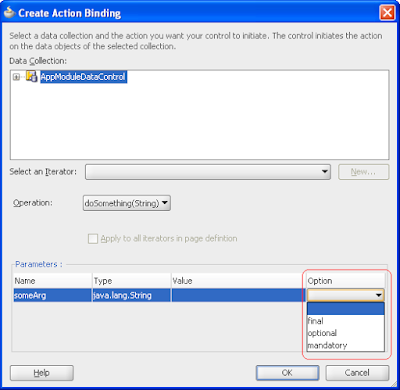Conditionally displaying search form parameters
ADF helps you to build search forms declaratively using model-driven af:query and af:quickQuery components. To learn more about this topic, please refer Chapter 26 Creating ADF Databound Search Forms in Fusion Dev. Guide. If you use ADF Business Components for building your business services, ViewCriteria defined on your ViewObject act as the model for the af:query component. af:query component (backed up with ViewCriteria) is smart enough to address most of the common use cases declaratively. However there may be some use case scenarios, where developers need to go beyond the declarative development approach and dirty their hands a bit:) One such scenario is displaying search form prameters, conditionally. In other words, parameters in the query panel needs to be displayed based on certain conditions. Let me try explaining a possible solution for this use case. Please remember that each query parameter displayed in af:query is modeled by a ViewCrieteriaItem instance. Apparently,...








